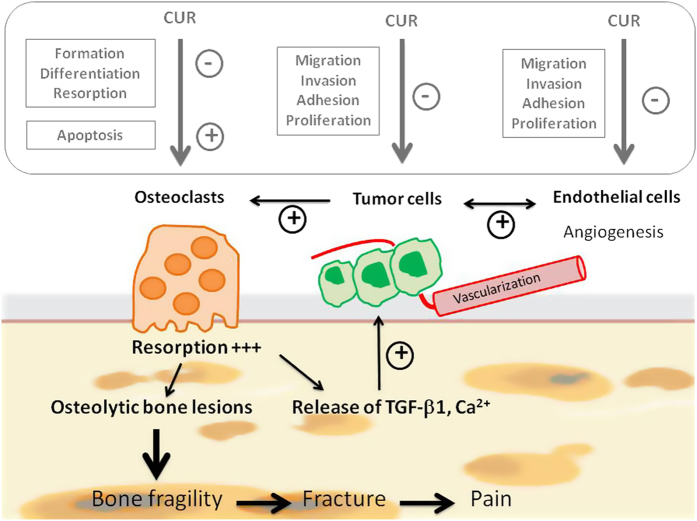Figure 3.
Effects of curcumin (CUR) on bone metastases. Summary of the physiopathology of bone metastases (in black). Excessive osteoclastic resorption activity is related to the presence of tumor cells secreting various osteolytic factors. This leads progressively in the development of severe bone lesions. Among the growth factors released from bone matrix, TGF-β1 is the most implied in the tumor growth and invasion. Effects of curcumin (in the gray box) on osteoclasts, tumor cells and endothelial cells. In addition to the decrease in the proliferation of endothelial cells and the formation of cell colonies,67,68 curcumin inhibits TNF-induced expression of adhesion molecules on endothelial cells,69 such as intracellular adhesion molecule (ICAM)-1, vascular cell adhesion molecule (VCAM)-1 and endothelial leukocyte adhesion molecule (ELAM)-1 on endothelial cells, which are critical for tumor cell invasion and metastases. The anti-angiogenic properties of curcumin may be mediated in part by the inhibition ofcyclic nucleotide phosphodiesterases, which are strongly involved in the regulation of the VEGF-induced endothelial cell activity.

